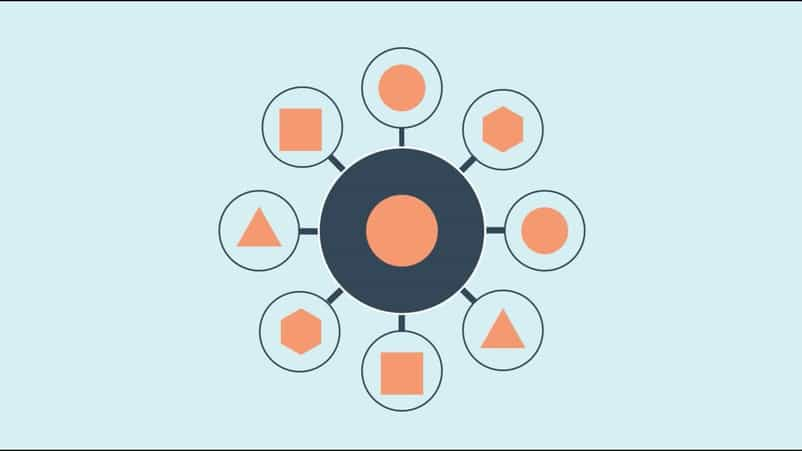What are pillar pages and why do they matter?

Last updated: 15 February 2022
Haven’t heard about pillar pages before? Don’t panic. We’re here to tell you exactly what they are, why they matter for search engine optimisation (SEO) and why they should be part of your content strategy.
Soon you’ll have the information you need to show search engines why you’re the authority in your field - without sweating the details of hundreds of long-tail keywords.
So what is a pillar page?
You’ll know that in building architecture, pillars are core elements used to support larger structures. A pillar page is much the same - but they’re used for website architecture instead. Each pillar page acts as a core for a broad topic, which links to clusters of pages that explore this primary topic in more depth. These deeper-level pages are known as topic clusters.
To date, standard practice for websites has been to create blog content optimised for specific long-tail keywords. With endless keyword variations, you could end up with numerous blogs covering very similar keywords, potentially competing against each other. And with blogs being added ad-hoc, it could be difficult for both users and search engines to discover all the relevant content around similar topics.
Pillar pages and topic clusters take a more organised approach.
The pillar page provides a single channel for cluster pages to feed into. From your pillar page, users should be able to connect to all the relevant pages related to your broad topic. This makes it easier for both users and search engines to connect the dots and find the information they need.

Because pillar pages introduce a wide array of related topics, these pages may often be much longer than a standard blog post. Their intent is not to cover the primary topic in great detail, but to provide a central point that steers readers to more in-depth content related to the topic.
For instance, you might create a pillar page around digital marketing strategies. This core page would provide a broad overview of digital marketing strategies, perhaps with sub-sections or “chapters” to give an introduction to each specific strategy or topic. From there, separate web pages would be created covering each of those strategies in more detail. These pages form the topic clusters that link back to the pillar page.
How do pillar pages and topic clusters impact SEO?
As we know, SEO is a constantly evolving beast. Back in the early days, the easiest way to get your site to rank was to stuff the sucker full of the keywords you wanted to rank for.
This system was easily gamed. Poorly written, irrelevant content could rank well, providing it had sufficient keywords. Thankfully, it wasn’t too long before Google and other search engines put an end to that!
To provide a better user experience, algorithms grew “smarter”. They began to understand user-intent. Rather than focusing on random keywords, they began to look at the phrasing around those keywords and search queries for context.
The emergence of smartphones and tablets introduced us to voice-activated searches. These rely on more natural speech patterns and questions, instead of disjointed keyword queries.
So as search queries have become more specific and natural, search engines have adjusted their algorithms to better understand user intent and return the most relevant results.
Which is where using pillar pages and a topic cluster content strategy can help drive traffic to your site.
According to digital marketing entrepreneur, Neil Patel,
Google’s algorithm can better understand a clean website experience where the hyperlinks make sense and tell Google exactly what each piece of content is about.
Creating content clusters by interlinking relevant pages around a single subject makes it easier for search engines to find the related content. When they can determine you have built a hub of knowledge that will provide value to their users, your content is more likely to be returned in search results.
Planning your pillar page and topic cluster content
Whether you’re creating a brand new site, or want to restructure your existing site, the steps to creating effective pillar pages are much the same.
Identify what topics are relevant to your audience
The best place to start is to look at the services you already offer and consider what content you can create around those. If you’re starting fresh, this exercise can help you establish the direction of your content. If you’re reviewing existing content, this is a good opportunity to assess your content to see what should stay or go.
Let’s imagine you’re a digital marketing agency and one of your services is digital marketing strategy. This becomes the feature topic for one of your pillar pages.
Ideally, your pillar page should be able to answer the original search query, but also be broad enough to feed into multiple related posts with more detail.

Establish a list of related sub-topics
Now that you have your feature topic (digital marketing strategy), it’s time to drill down into all the relevant sub-topics that will form the basis for your cluster pages.
If you already have a website with relevant blog content, these would be repurposed as your cluster pages. This is a great opportunity to cull similar pages and streamline your content.
Ideally, your cluster content should identify the main queries or concerns your customer might have and provide the answers.
Whatever you approach, you should end up with a road map of sorts that looks like this:
Pillar page feature topic:
- Digital marketing strategies
Cluster page topics:
- Email marketing
- Social media marketing
- Inbound marketing
- Outbound marketing
- Online marketing
- Digital channels
- Remarketing
Once you’ve established what your topic clusters will be, the next step is to create your pillar page with internal links to these pages. Your topic cluster pages should also link back to your pillar page and other cluster pages where appropriate.
Are keywords still important?
Absolutely. If your content doesn’t contain the keywords your audience is looking for, then chances are it’s not going to be relevant to them.
The difference with a pillar page is you’re not trying to optimise for any specific long-tail keywords. That’s the purpose of your cluster pages.
Instead, your pillar page sits at the core of those pages and directs traffic through to them. At this level, addressing user-intent is the primary purpose. Your keyword focus should be broad, rather than narrow.
With cluster content focused on long-tail keywords, and hyperlinks in place, search engines will be able to understand the semantic relationship and authority your pillar page holds.
Real-life pillar page examples
The best way to see how pillar pages work as a content strategy tool is to check out sites already doing pillar pages well.

HubSpot’s marketing content strategy page
HubSpot is known for inbound marketing strategy, so it’s no surprise they have an amazing pillar page on their site.
Pillar pages offer a lot of information which HubSpot handles by providing the option to download some of the information via PDF. This allows readers to access additional information without getting bogged down on the site and is an excellent opportunity to add a lead capture form!
Another clever approach by HubSpot is to set up their pillar page with chapter-like links to each section. Establishing obvious links to each section makes it super-easy for users to jump directly to the information that is relevant to them, rather than scrolling endlessly through the entire page. Anything that makes it easier for your users to access your content is a great idea

Typeform’s customer success page
Typeform’s pillar page is a great example of user-experience (UX). Like HubSpot, they’ve broken their page into chapters, however, they use a floating chapter menu so users can easily skip straight to the relevant section from any point on the page.
It’s clear that the design of the page was also a major consideration - something many text-heavy pages overlook. They’ve incorporated a lot of design elements to break up the text, making it easy to focus and pay attention.

Impact’s content style guide page
Impact use a highly effective form of pillar page called an ultimate guide. Guides like this used to be passed out as lead magnets, but smart companies have learned they actually work incredibly well as pillar pages.
This pillar page includes plenty of helpful examples and templates for users. And, just like HubSpot, they’ve thought about using their page to capture leads with information for their visitors to download.
The explanation at the top of their page is also a great way to quickly and effectively let visitors know what they can expect.
So there you have it. Everything you need to know about creating pillar pages and topic clusters to increase the relevance and search quality of your content.
If you’re ready to master pillar pages and super-charge your content strategy, enter your details to download our Pillar Page Content Strategy Planner. It’s free!







